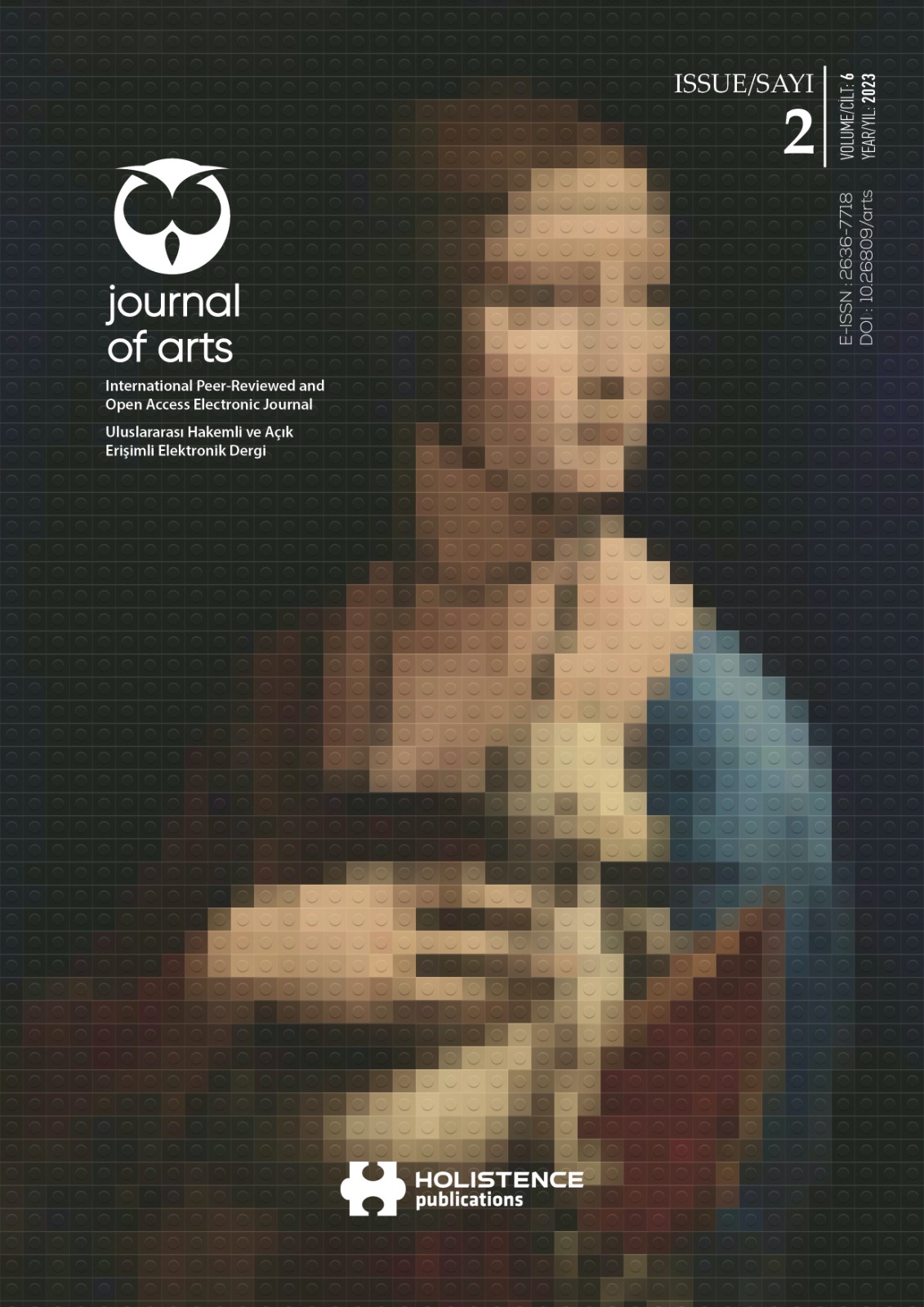Visual analysis of 3D characters and animations used in the presentation of cultural heritage at museums
DOI:
https://doi.org/10.31566/arts.2050Keywords:
Museum, Cultural Heritage, Digital Character, Animation, History, Augmented Reality, Virtual RealityAbstract
Digital characters are imaginary or realistic-looking entities created with computer programs. It can be used in cartoons and animations, as well as in many different areas such as games, advertisements, and the cinema sector. Avatars that represent real identities on digital platforms such as the metaverse today also consist of digital characters. Modeling digital characters that can replace real identities in the digital world is relatively easy. However, there are many paradigms in modeling a historical character in which the cultural heritage is reflected and therefore requires a difficult and laborious process. Information about the period in which a historical character lived is very limited, it is not possible to know exactly the culture, lifestyle, eating habits, speech, tone of voice, behaviour, and body movements of the period. Moreover, this character’s breaking away from history and interacting with today’s human is equivalent to interacting with an alien. Therefore, when it comes to cultural heritage, the characters either do not speak and have very limited movements, or if they interact, there are examples modelled from recent history. Today we live in a digital age, our tendency to communicate with visuals and watch events with moving images is dominant. In this case, the date and the information about the date are interesting if they are visualized. For this reason, it is necessary to speak the language of the digital age in order to reflect the cultural heritage and present history to the youth. Interaction and reflection of experience-oriented history with augmented reality, virtual reality or augmented reality has become the determinant of the post-digital age, not digital any more. They have become a necessity for history, culture, and archaeology. Virtual reality applications, storytelling with digital characters, have become a tool that encourages participation and motivation for today’s user. In this research, the scale in the table of Spyros Vosinakis “Dimensions, definitions and possible values related to the cultural heritage application use of digital characters” was developed and used. A historical character modelled in 3D according to this scale is “design: which era, clothing accessories and body covering preferences”, “reality: virtual, augmented mixed reality”, “credibility: movement, facial expressions, gaze, personality, emotion transfer” “environment: Criteria such as the credibility of the environment in which the character is presented, “interaction: interaction with the user, the use of artificial intelligence, decision-making, responding”, “function: showing, telling a story”, “reflecting history: what information is given” are examined. The characters of Mona Lisa, John Calvin, Uruk City, Hagia Sophia, Lady Ada Byron and Salvador Dali, which were taken into the scope of the research with the purposeful sampling method, are analysed by content analysis method. According to the findings, it was concluded that the details, clothing, accessory colours, and coatings in the models play an important role in increasing the believability, the ability of the characters to move, the voice acting, and the interaction increase the reality. When augmented reality and virtual reality experiences are compared, it can be said that the reality perception of the user who is teleported to the historical place increases more with the complete isolation of virtual reality from the external environment. Finally, it is thought that the inclusion of human characteristics such as movement, verbal skills, mimics, and personality in the design, as well as realistic character design, plays an important role in increasing the number and interaction of participants, due to their reality.
Downloads
References
BALL, S. MICHAEL, SMITH W.H. GREGORY. (1992). Analyzing Visual Data. London: Sage Publications.
BANKS, M. (2001). Visual Methods in Social Research. London: Sage Publications
CUSTOM-WRITING.ORG (2023). How to Write a Visual Analysis Essay: Examples & Template. Date Accessed: 17.02.2023 Date Accessed: https://custom-writing.org/blog/visual-analysis-essay
HOLDEN, D., KANOUN, O., PEREPICHKA, M. & POPA, T. (2020). Learned Motion Matching. ACM Trans. Graph., Vol. 39, No. 4, Article 1. P. 1-13.
HUDSON, S., NOONAN-MORRISSEY, N. (2002). The Art of Writing about Art. Belmont, CA: Thomson Learning.
MACHIDON, O. M. DUGULEANA, M. & CARROZZINO M. (2018) Virtual Humans in Cultural Heritage ICT Applications: A Review. Journal of Cultural Heritage, Volume 33, September–October 2018, Pages 249-260.
MARZAVI B., 2022. How Animators are Using Machine Learning Animation. Date Accessed: 17.02.2023 Date Accessed: https://businessofanimation.com/how-animators-use-machine-learning-animation/
METCALFE, A. S. (2016). Repeat Photography and Educational Research. Ed. Julianne Moss & Barbara Pini. Visual Research Methods in Educational Research. Australia: Palgrave macmillan 153-171.
SANOFF, H. (1991). Visual Research Methods in Design. New York: Van Nostrand Reinhold
SAYRE, H. M. (2005). Writing about Art. Upper Saddle River, NJ: Prentice Hall.
ŞAHİN, C. (2019). Stages of 3D Character Modeling and Animation. İDİL Journal, Volume 8, Issue 55, pp. 387- 392.
SE´NE´CAL, S., CADI, N., ARE´VALO, M. & MAGNENAT-THALMANN, N. (2003). Modelling Life Through Time: Cultural Heritage Case Studies. Mixed Reality and Gamification for Cultural Heritage. Ed. Marinos Ioannides, Nadia Magnenat-Thalmann, George Papagiannakis Switzerland: Springer International Publishing AG.
TÜKER, Ç. (2007). 3D Logic from Design to Application. İstanbul: Pusula.
VOSINAKIS, S. The Use of Digital Characters in Interactive Applications for Cultural Heritage. Applying Innovative Technologies in Heritage Science (pp.109-137)
Additional Files
Published
How to Cite
Issue
Section
License
Copyright (c) 2023 Holistence Publications

This work is licensed under a Creative Commons Attribution 4.0 International License.
When the article is accepted for publication in the Journal of Arts, authors transfer all copyright in the article to the Rating Academy Ar-Ge Yazılım Yayıncılık Eğitim Danışmanlık ve Organizasyon Ticaret Ltd. Şti.The authors reserve all proprietary right other than copyright, such as patent rights.
Everyone who is listed as an author in this article should have made a substantial, direct, intellectual contribution to the work and should take public responsibility for it.
This paper contains works that have not previously published or not under consideration for publication in other journals.










